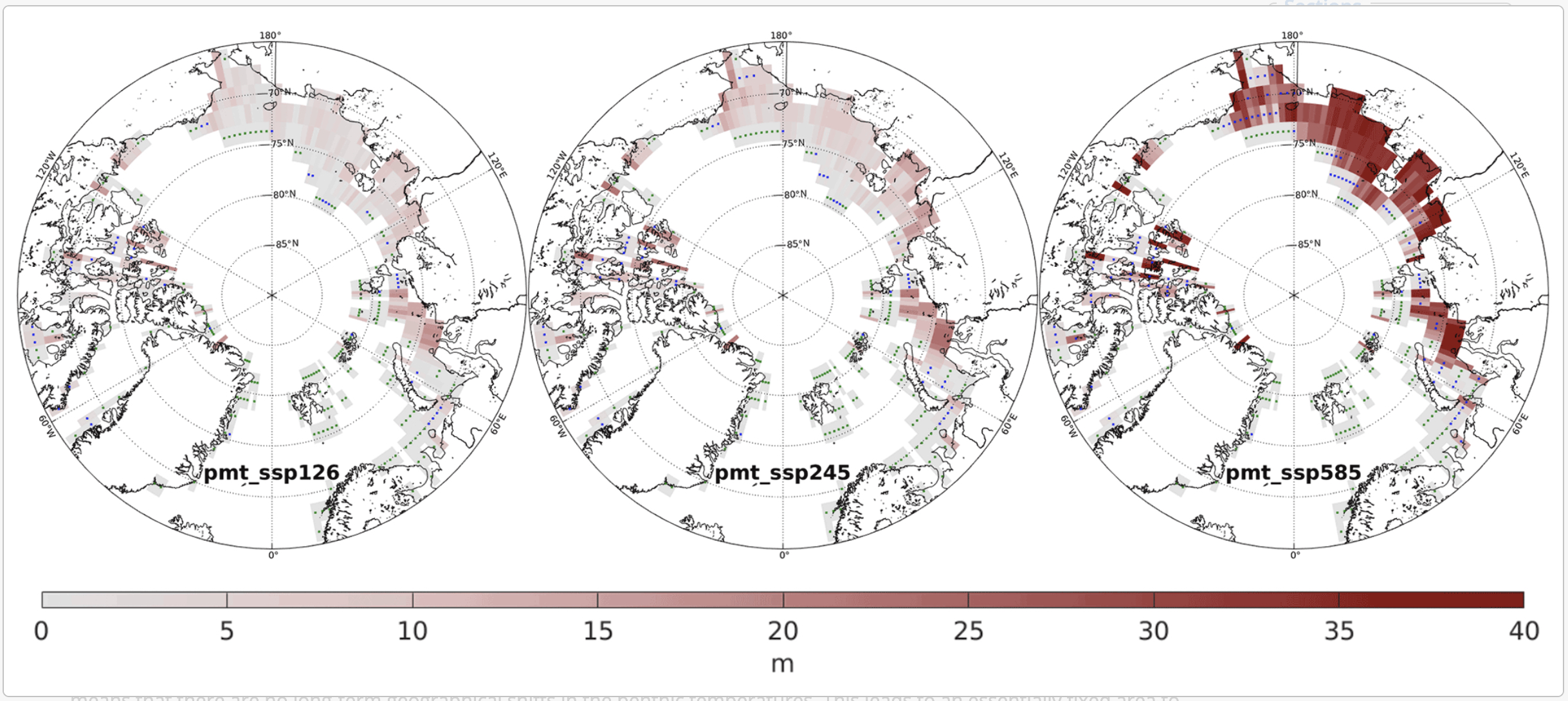Most earth system models (ESMs) have so far neglected climate feedbacks arising from carbon release from thawing permafrost, especially from thawing of subsea permafrost.
New study by Stiig Wilkenskjeld et al. assesses the fate of subsea permafrost in the next 1000 years, by implementing subsea permafrost into JSBACH, the land component of the Max Planck Institute Earth System Model (MPI-ESM).
This is the first implementation of subsea permafrost processes in an ESM component.
The authors investigated three extended scenarios from the 6th phase of the Coupled Model Intercomparison Project (CMIP6). The results for the 21st century show only small differences among the scenarios, but in the upper-end emission scenario SSP5–8.5 (shared socio-economic pathway), especially in the 22nd century, subsea permafrost ice melting is more than 15 times faster than in the pre-industrial period. In this scenario about 35 % of total subsea permafrost volume and 34 % of subsea permafrost area are lost by the year 3000 due to climatic changes.
In the more moderate scenarios, the melting rate maximally exceeds that of pre-industrial times by a factor of 4, and the climate change induced subsea permafrost loss (volume and area) by the year 3000 does not exceed 14 %.
The results suggest that the rate of melting of subsea permafrost ice is related to the length of the local open-water season and thus that the easily observable sea ice concentration may be used as a proxy for the change in subsea permafrost.



